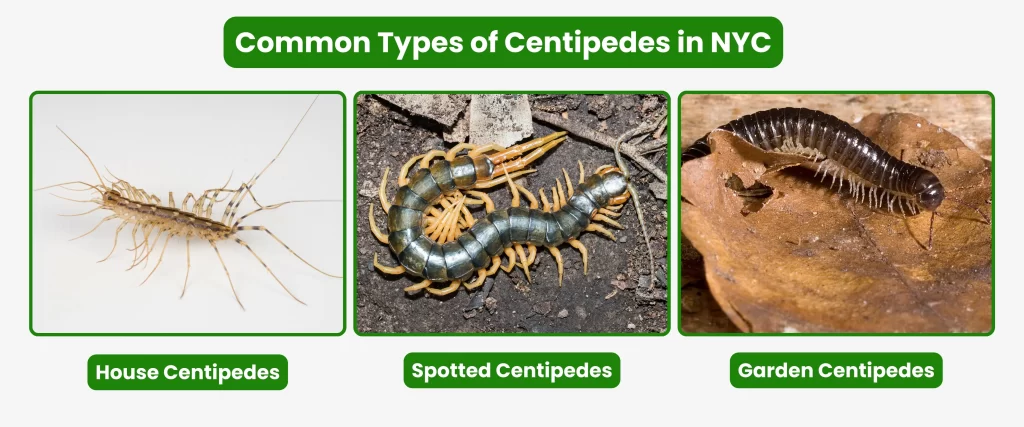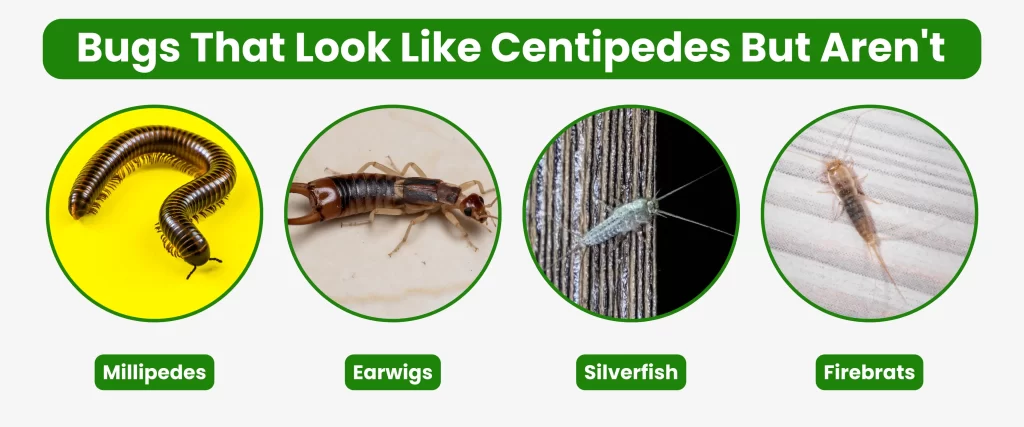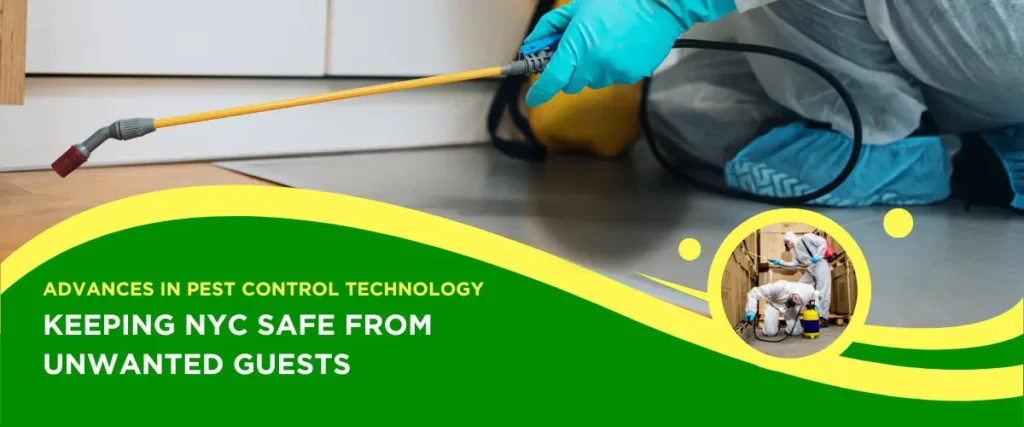
Are Centipedes Dangerous? Unveiling the Truth About These Multi-Legged Invaders in NYC Homes
Centipedes, with their numerous legs and often intimidating appearance, can strike fear into the hearts of many homeowners. These elongated, segmented creatures are frequently seen as unwelcome guests, particularly in urban environments like New York City. It’s essential to dispel common misconceptions and understand these arthropods to manage them effectively.
For NYC residents, knowledge about centipedes is crucial. These creatures are more prevalent in urban areas than one might think, and understanding their behavior and habits can help prevent infestations and ensure the safety of your home.
Understanding Centipedes
Centipedes belong to the class Chilopoda, a group of predatory arthropods characterized by their elongated, flattened bodies composed of numerous segments. Each segment typically bears a pair of legs, hence the name “centipede”. They have a distinct head with a pair of antennae, powerful mandibles for capturing prey, and a pair of venomous claws used for defense and immobilizing victims.
Centipedes are primarily nocturnal, hunting for insects and other small invertebrates. They are carnivorous and play a crucial role in the ecosystem by controlling populations of pests.
Common Types of Centipedes Found in Homes, Especially in NYC
While there are thousands of centipede species worldwide, only a few are commonly found in homes, particularly in urban areas like NYC. Following are most of the common centipedes:

- House Centipedes: These are the most common indoor centipedes. They are yellowish-gray with long legs and can grow up to an inch or more. House centipedes are primarily beneficial as they prey on other household pests like spiders, cockroaches, and silverfish.
- Spotted Centipedes: As the name suggests, these centipedes have distinctive spots along their body. They are slightly larger than house centipedes and tend to prefer outdoor environments but may occasionally venture indoors.
- Garden Centipedes: While not typically indoor dwellers, garden centipedes can sometimes find their way into homes. They are larger than house centipedes and have a more robust appearance.
Are Centipedes Dangerous?
Addressing the Main Question: Are Centipedes Dangerous to Humans?
One of the most common concerns about centipedes is whether they pose a threat to humans. While the idea of a multi-legged creature scurrying around your home can be unsettling, the truth is that most centipedes found in homes are harmless to humans.
Centipedes do possess venom, which they use to subdue their prey. However, the venom of most common house centipedes is not potent enough to cause serious harm to humans. A centipede bite might be painful, similar to a bee sting, but it rarely leads to severe symptoms.
Differences Between House Centipedes and Other Centipedes
It’s essential to differentiate between house centipedes and other centipede species. While house centipedes are generally harmless, some larger outdoor centipedes can deliver a more painful bite. However, encounters with these larger species are rare indoors.
- House Centipedes: These are the most common indoor centipedes, typically yellowish-gray with long legs. They are beneficial predators for other household pests.
- Other Centipedes: Some outdoor centipedes can grow significantly larger and have more potent venom. These species are unlikely to be found indoors.
Are House Centipedes Poisonous or Harmful
While house centipedes are technically venomous, their venom is not considered a significant threat to humans. Their primary purpose for venom is to immobilize their prey, which consists of insects and other small invertebrates.
For most people, a house centipede bite will cause only mild discomfort, similar to a bee sting. However, individuals with allergies to insect venom may experience more severe reactions. If you experience severe symptoms after a centipede bite, seek medical attention.
Identifying a Centipede Bite
Centipedes inject venom through their specialized front legs, which are shaped like pincers. A centipede bite typically appears as two distinct puncture wounds on the skin, often resembling a spider bite.
How Do Centipedes Get in the House?
Common Entry Points for Centipedes in NYC Homes
Centipedes are adept at finding their way into homes, especially in urban environments like NYC. Common entry points include:

- Cracks and crevices: Small gaps in foundations, walls, and around doors and windows provide easy access.
- Drains and pipes: Centipedes can climb up drains and pipes to enter homes.
- Openings around utilities: Gaps around utility lines and vents can serve as entry points.
- Doors and windows: Unsealed doors and windows can allow centipedes to enter.
Environmental Factors that May Contribute to Centipede Infestations
Certain environmental conditions can attract centipedes to homes:
- Moisture: High humidity levels create ideal conditions for centipedes. Leaky pipes, damp basements, and poorly ventilated areas can be particularly attractive.
- Presence of prey: An abundance of insects like cockroaches, spiders, and silverfish can lure centipedes indoors.
- Outdoor conditions: Dense vegetation around the home can provide hiding places for centipedes, increasing the likelihood of them entering.
What Attracts Centipedes in Homes?
Factors that Attract Centipedes to Indoor Environments
Centipedes are primarily attracted to homes in search of food and shelter. Key factors include:

- Food sources: The presence of other insects, such as cockroaches, spiders, and silverfish, provides a food supply for centipedes.
- Moisture: Damp areas in homes, like basements, bathrooms, and kitchens, create favorable conditions for centipedes.
- Warmth: During colder months, homes offer a warm refuge for centipedes.
Common Areas in Homes Where Centipedes Are Found
Centipedes often seek out dark, damp, and secluded areas. Common hiding spots include:
- Basements and crawl spaces: These areas often have high humidity levels and are prime locations for centipedes.
- Bathrooms and kitchens: These areas provide moisture and potential food sources.
- Behind baseboards and appliances: Centipedes can hide in tight spaces.
- Closets and storage areas: Dark and undisturbed areas can attract centipedes.
How to Prevent House Centipedes?
Tips and Strategies to Prevent Centipedes from Entering the House
Preventing centipedes from entering your home is often more effective than dealing with an infestation. Here are some practical tips:

- Seal entry points: Examine your home’s exterior for cracks, gaps, and openings around doors, windows, and foundations. Seal these areas with caulk or weatherstripping to prevent centipede entry.
- Reduce moisture: Centipedes thrive in damp environments. Use dehumidifiers in basements and other humid areas. Repair leaky pipes and faucets promptly.
- Eliminate food sources: Centipedes prey on other insects. Control other pest populations in your home to reduce their attraction.
- Outdoor maintenance: Keep the exterior of your home clean and dry. Remove clutter, piles of wood, and debris that can provide hiding places for centipedes.
Home Maintenance Practices to Deter Centipedes
Regular home maintenance can significantly reduce the chances of a centipede infestation:
- Ventilation: Ensure proper ventilation in bathrooms, kitchens, and basements to reduce humidity levels.
- Declutter: Remove clutter to eliminate potential hiding places for centipedes.
- Regular cleaning: Vacuum and mop floors regularly to remove food crumbs and other insect attractants.
- Laundry care: Shake out clothes before wearing them to prevent centipedes from hiding inside.
How to Get Rid of House Centipedes?
Effective Methods for Eliminating Centipedes from Homes
If you already have a centipede problem, here are some effective eco-friendly pest control methods to eliminate them:
- Vacuuming: Vacuum up centipedes you find. Dispose of the vacuum bag immediately to prevent them from escaping.
- Diatomaceous earth: This natural powder can be applied to areas where centipedes are often seen. It dehydrates insects, including centipedes.
- Sticky traps: Place sticky traps in areas where centipedes are commonly found to capture them.
- Professional Pest Control: If the infestation is severe, consider professional pest control service to handle this culprit.
Bugs That Look Like Centipedes But Aren’t
Identification Guide for Insects Commonly Mistaken for Centipedes
Identifying insects that are often mistaken for centipedes can be challenging due to their similar elongated and segmented bodies. However, there are key differences that can help in distinguishing them. Here are some common bugs that look like centipedes but aren’t:

- Millipedes:
- Appearance: Millipedes have cylindrical bodies and can have anywhere from 20 to over 400 legs, with two pairs of legs per body segment.
- Movement: Unlike centipedes, millipedes move slowly, often appearing to glide.
- Behavior: Millipedes are detritivores, feeding on decaying plant material, and they tend to curl up into a coil when disturbed.
- Earwigs:
- Appearance: Earwigs have a more flattened body and are characterized by their pincers (cerci) at the rear.
- Movement: They move quickly and can sometimes fly, as some species have wings.
- Behavior: Earwigs are nocturnal and often hide in dark, moist places during the day. They are omnivores, feeding on a variety of organic matter.
- Silverfish:
- Appearance: Silverfish have a teardrop-shaped body covered in silvery scales and three long, tail-like appendages at the rear.
- Movement: They move with a distinctive, fish-like wiggling motion.
- Behavior: Silverfish are nocturnal and thrive in humid environments. They feed on carbohydrates such as sugar and starches, including book bindings, wallpaper, and fabrics.
- Firebrats:
- Appearance: Similar to silverfish but usually darker and with a mottled gray appearance.
- Movement: Like silverfish, they have a wiggling motion when they move.
- Behavior: Firebrats prefer hotter environments, such as near boilers and furnaces. They have similar dietary preferences to silverfish.
Comparison of Centipedes with Other Similar-Looking Bugs
Centipedes can be differentiated from these similar-looking bugs by several key characteristics:
- Body Segments and Legs: Centipedes have one pair of legs per body segment, which distinguishes them from millipedes.
- Movement Speed: Centipedes are known for their swift movement, unlike the slower millipedes and the gliding silverfish.
- Diet and Behavior: Centipedes are predators, hunting insects and other small creatures, while many of the look-alikes have different diets, such as detritus (millipedes) or carbohydrates (silverfish and firebrats).
- Habitat: Centipedes prefer moist environments and are often found in soil, under stones, and inside homes where humidity is high.
House Centipede vs Silverfish
Differences and Similarities Between House Centipedes and Silverfish

Understanding the differences and similarities between house centipedes and silverfish is crucial for effective pest management:
- Appearance:
- House Centipedes: These have elongated, segmented bodies with long, slender legs that give them a fringe-like appearance. They can be up to 1-1.5 inches long and are yellowish-grey with dark stripes.
- Silverfish: Silverfish are smaller, typically around 0.5-1 inch long, with a teardrop-shaped body and covered in silvery scales. They have three long bristles at the rear.
- Movement:
- House Centipedes: They move quickly and can run up walls and ceilings due to their long legs.
- Silverfish: They move with a wiggling, fish-like motion and are also fast but do not climb walls.
- Diet:
- House Centipedes: These are carnivorous, feeding on insects, spiders, and other small arthropods.
- Silverfish: Silverfish feed on carbohydrates, including sugars and starches, often damaging books, wallpaper, and fabrics.
- Habitat:
- House Centipedes: They prefer damp areas like basements, bathrooms, and crawlspaces.
- Silverfish: They thrive in humid environments such as bathrooms, kitchens, and attics.
Identification Tips and Behavior Comparison
- Identification Tips:
- House Centipedes: Look for their long legs and striped bodies. They are often seen scurrying quickly across floors and walls.
- Silverfish: Look for their silvery color and fish-like movement. They are usually found in dark, moist areas.
- Behavior Comparison:
- House Centipedes: Being predatory, house centipedes actively hunt other pests, making them beneficial in controlling insect populations within homes. They are not harmful to humans but can be startling due to their appearance and speed.
- Silverfish: These insects are primarily scavengers and can cause damage to household items due to their dietary preferences. They are not harmful to humans but can be a nuisance.
Conclusion
Centipedes, while often feared, are generally harmless to humans. However, their presence in your NYC home can be unsettling. By understanding their behavior, habits, and preferred environments, you can effectively prevent and manage infestations.
Key points to remember include:
- Most house centipedes are beneficial as they prey on other pests.
- Centipedes are attracted to moisture, food sources, and dark, secluded areas.
- Sealing entry points, reducing humidity, and eliminating insect prey can help prevent infestations.
- If you have a centipede problem, there are safe and effective methods to eliminate them.
- It’s important to accurately identify centipedes to avoid confusion with other similar-looking insects.
Remember, prevention is key. By implementing the tips outlined, you can significantly reduce the chances of a centipede infestation in your home. If the problem persists or becomes overwhelming, don’t hesitate to contact a professional pest control service for assistance.


